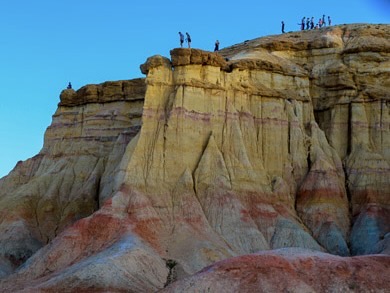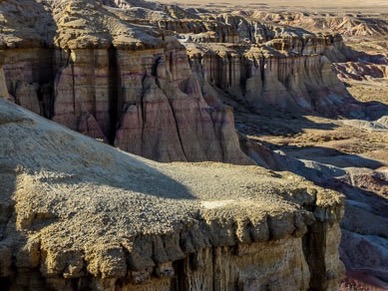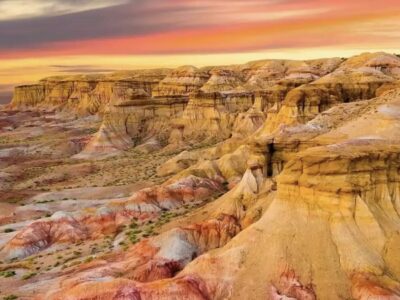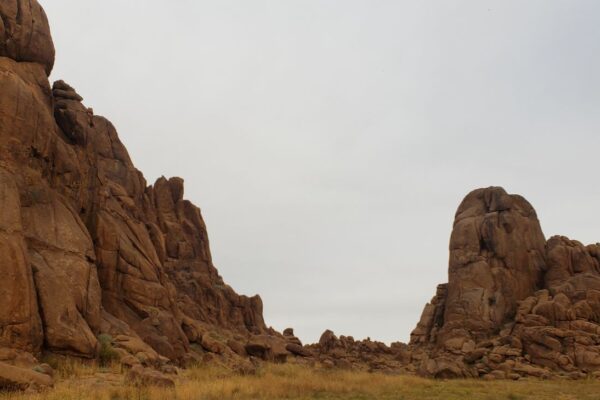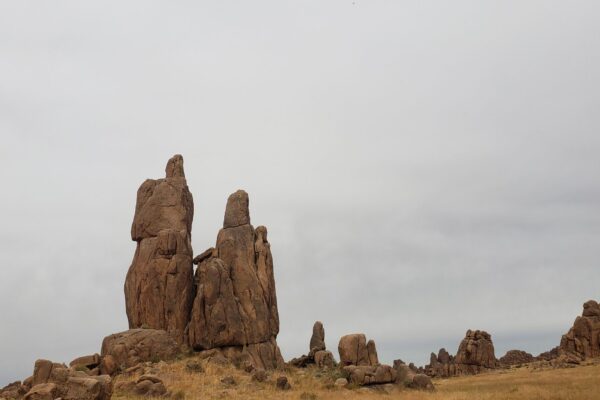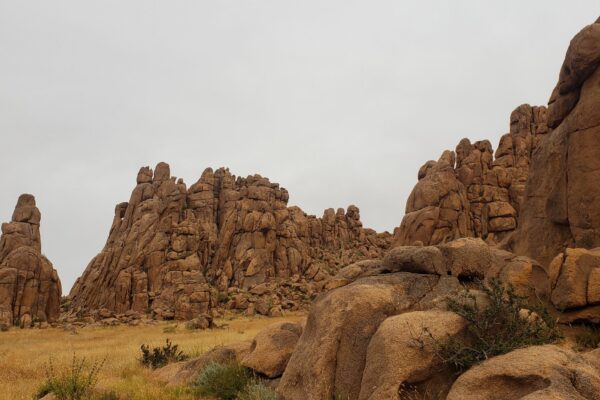Before launching its public art events, workshops and creative activities in Tsgaandelger Soum in Dundgobi Province, the project will organize research trip to the remote places of the Gobi region, including Tsagaan Suvarga and Ikh Gazriin Chuluu, located in Dundgobi Province. While enjoying visiting these stunning natural landscapes, artists can explore the traces of the climate changes and economic activities of the nomadic families.
Tsagaan Suvarga
420 km from Ulaanbaatar, 85 km from Ulziit town in Dundgobi province, Tsagaan Suvarga is a 30-60 m high, 400 m long, colorful limestone formation, once was the ocean bed where the visitors find marine fossils and clamshells. Its colors are outstanding early morning and evening. Tsagaan Suvarga (White Stupa) was named after its shape resembles the Buddhist relict stupas or pagodas.
Tsagaan Suvarga is a beautiful photo shooting spot both day and night. There are some trails to hike down and up through the cliffs. Except for the cliffs, 50m-long Khevtee Bosoo Cave is worth a visit.
Ikh Gazriin Chuluu
Ikh Gazriin Chuluu is one of Mongolia’s fascinating natural wonders. This mountain of granite rock, located in the Gobi Desert, reaches a peak height of 1,706 meters. The rocky mountains of Ikh Gazriin Chuluu stretch from west to east, covering approximately 20 kilometers. Situated in Gurvansaikhan sum of Dundgovi province, this site offers visitors a unique glimpse into Mongolia’s geological and cultural heritage.
You can find several minerals such as pure crystal, cloudy crystal, jade, chalcedony, flourite, bezoar and shale in the area. Around 30 types of medicinal herbs like roseroot, silverweed and locoweed grows here, meanwhile over 20 species including whiskered bat and common bat inhabits Ikh Gazriin Chuluu.
The area is rich in local history and folklore. Many caves in the region are named after historic figures who lived or hid there, adding a layer of cultural intrigue to the natural beauty. The area features an open-air theatre dedicated to Mongolia’s national long song (Urtiin Duu), providing a cultural highlight for visitors interested in traditional Mongolian music.


